If you’ve noticed the appearance of lines and wrinkles on your forehead, you may be curious about the options available for smoothing them out. One popular solution is Botox, a cosmetic treatment that has gained traction for its ability to reduce the appearance of forehead lines. Whether you’re considering Botox for the first time or simply want to learn more about the procedure, this blog post will provide you with all the information you need. From understanding how Botox works to what to expect during the consultation and treatment process, we’ll guide you through it all. Additionally, we’ll discuss the recovery period, when to expect results, and how to maintain them after treatment. Furthermore, we’ll look at common side effects and risks, as well as alternative treatments to consider for forehead lines. Let’s dive in and explore the world of forehead line treatments together.
Understanding Forehead Lines And Wrinkles
As we age, we start noticing various signs that indicate the passing years. One common sign that many people notice is the development of forehead lines and wrinkles. Forehead lines are the horizontal lines that appear on the forehead while wrinkles are the deeper creases that become more pronounced over time. These lines and wrinkles are primarily caused by the natural aging process, but certain lifestyle factors and habits can also contribute to their formation.
One of the main causes of forehead lines and wrinkles is the natural loss of collagen and elastin in the skin. Collagen and elastin are two proteins that provide the skin with its structure and elasticity. As we get older, our bodies produce less of these proteins, leading to sagging and the formation of wrinkles. Additionally, repeated facial expressions, such as frowning or raising your eyebrows, can contribute to the development of forehead lines.
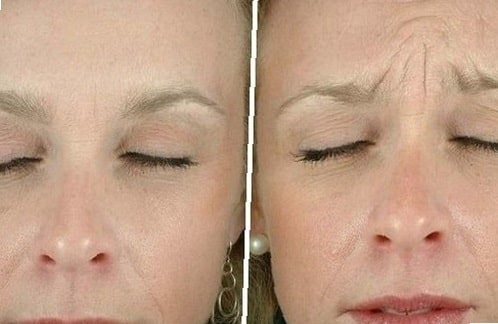
Another factor that can cause forehead lines and wrinkles is sun exposure. Over time, the harmful ultraviolet (UV) rays from the sun can damage the skin’s collagen and elastin, making it more prone to wrinkles. That’s why it’s important to protect your skin by wearing sunscreen and seeking shade during peak sun hours.
How Botox Works To Smooth Forehead Lines
Forehead lines and wrinkles can be a common concern for many individuals as they age. These lines can make a person appear older and more tired than they actually are. Fortunately, there are various treatments available to help smooth out these lines and restore a more youthful appearance. One popular treatment option is Botox.
Botox, short for botulinum toxin, is a neurotoxic protein that is derived from the bacteria Clostridium botulinum. It works by temporarily paralyzing the muscles in the treated area, which in this case, is the forehead. By doing so, Botox is able to relax the muscles and reduce the appearance of fine lines and wrinkles, resulting in a smoother forehead.
During a Botox treatment, a series of small injections are administered directly into the muscles of the forehead. The procedure itself is relatively quick and typically does not require any anesthesia. However, a topical numbing cream may be applied to help minimize any discomfort.
Consultation: Assessing Your Forehead
When considering Botox treatment for forehead lines, it is important to start with a consultation to assess your specific needs and determine if this procedure is right for you. During this consultation, a skilled medical professional will evaluate your forehead, discuss your goals, and provide personalized recommendations tailored to your unique facial features.
During the assessment, the medical professional will carefully examine your forehead to identify the severity of the lines and wrinkles present. They will also consider other factors such as skin quality, muscle strength, and facial symmetry. This comprehensive evaluation is crucial in determining the most suitable treatment plan for achieving your desired outcomes.
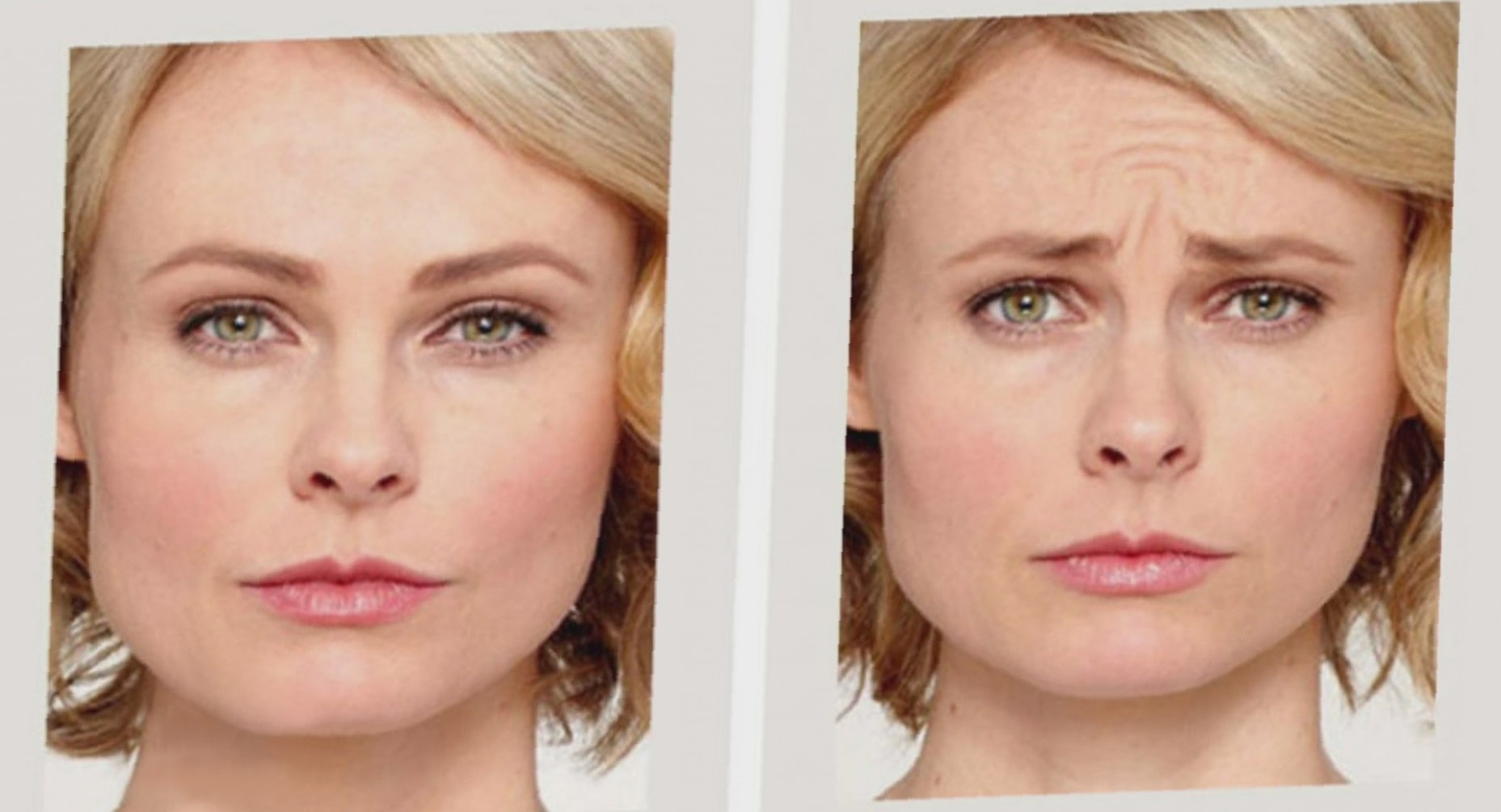
The consultation provides an opportunity for you to share your concerns, ask questions, and express any specific areas you would like to improve. It is important to be open and honest during this discussion, as it will help the medical professional better understand your expectations and ensure they can provide you with realistic outcomes.
Additionally, the consultation allows the medical professional to explain the Botox procedure in detail. They will discuss the purpose and mechanism of action of Botulinum Toxin Type A, commonly known as Botox, and how it can help smooth forehead lines. They will also explain any potential risks or side effects associated with the treatment, ensuring you are well-informed before making a decision.
| Key aspects discussed during the consultation: | Benefits of a consultation: |
|---|---|
|
|
Preparing For Botox Treatment
Preparing for Botox Treatment
Before undergoing Botox treatment, it is important to make necessary preparations to ensure a smooth and successful procedure. This will not only help maximize the effectiveness of the treatment but also minimize any potential risks or complications. Here are a few key steps to follow when preparing for Botox:
1. Research and Choose a Reputable Provider: Take the time to research and select a qualified and experienced medical professional or dermatologist who specializes in administering Botox injections. Read reviews, check credentials, and schedule a consultation to discuss your expectations and concerns.
2. Understand the Procedure: Familiarize yourself with the Botox procedure and its effects before going in for treatment. Understand how the injection works, what areas can be treated, and what results you can expect. This will help you manage your expectations and make an informed decision about the treatment.
3. Avoid Blood-Thinning Medications: Prior to your Botox treatment, it is advisable to avoid any blood-thinning medications or supplements like aspirin, ibuprofen, vitamin E, fish oil, or herbal supplements. These can increase the risk of bruising or bleeding at the injection site.

4. Communicate Any Medical Conditions or Medications: During your consultation, inform your provider of any underlying medical conditions or medications you are currently taking. Certain conditions or medications may affect your suitability for Botox treatment, so it is essential to disclose this information to ensure your safety.
5. Follow Pre-Treatment Instructions: Your medical professional will provide you with specific pre-treatment instructions to follow. This may include avoiding alcohol for a few days before the procedure, cleansing the treatment area, or refraining from applying any creams or makeup on the day of treatment.
| Things to Do | Things to Avoid |
|---|---|
|
|
|
|
|
By following these preparatory steps, you can ensure that you are fully ready for your Botox treatment and enhance the overall experience. Remember to consult with your medical professional or dermatologist for personalized advice and guidelines based on your individual needs and health condition.
The Botox Procedure: What To Expect
When considering getting Botox for forehead lines, it is important to understand what the procedure entails and what to expect during the process. Botox, also known as botulinum toxin, is a popular cosmetic treatment used to temporarily smooth and reduce the appearance of wrinkles and fine lines. It works by blocking the nerve signals in the muscles, preventing them from contracting and causing wrinkles. Before undergoing the Botox procedure, it is crucial to have a consultation with a qualified healthcare professional to assess your forehead and determine if you are a suitable candidate for the treatment.
During the consultation, the healthcare professional will discuss your treatment goals, medical history, and any concerns or expectations you may have. They will thoroughly examine your forehead and facial muscles to determine the appropriate dosage and injection sites for Botox. It is essential to be open and honest during this consultation to ensure a personalized and safe treatment plan.
Once the consultation is complete and you have decided to proceed with Botox, the actual procedure can usually be done in a healthcare professional’s office or medical spa. The process is relatively quick, typically taking around 10 to 15 minutes. However, the duration may vary depending on the number of areas being treated.
- The healthcare professional will clean the treatment area and may apply a topical numbing cream to minimize any discomfort. Botox needles are very fine, so the overall pain level is usually minimal. Some individuals may experience a slight stinging or pinching sensation during the injections, but this is typically well-tolerated.
- The healthcare professional will then carefully inject the Botox into specific muscles in the forehead using a thin needle. The number of injections and the amount of Botox used will depend on various factors discussed during the consultation, such as the severity of the forehead lines and the desired outcome.
- After the injections, the healthcare professional may gently massage the area to distribute the Botox evenly and ensure optimal results. They may also provide you with post-treatment instructions, such as avoiding rubbing or massaging the injected area for a few hours and refraining from intense physical activity for the rest of the day.
It is important to note that results from Botox injections are not immediate. It will take some time for the Botox to take effect and for the muscles to relax, which typically occurs within a few days to a week. Patience is key during this period, and it is essential to follow the healthcare professional’s guidance regarding post-treatment care and maintaining results.
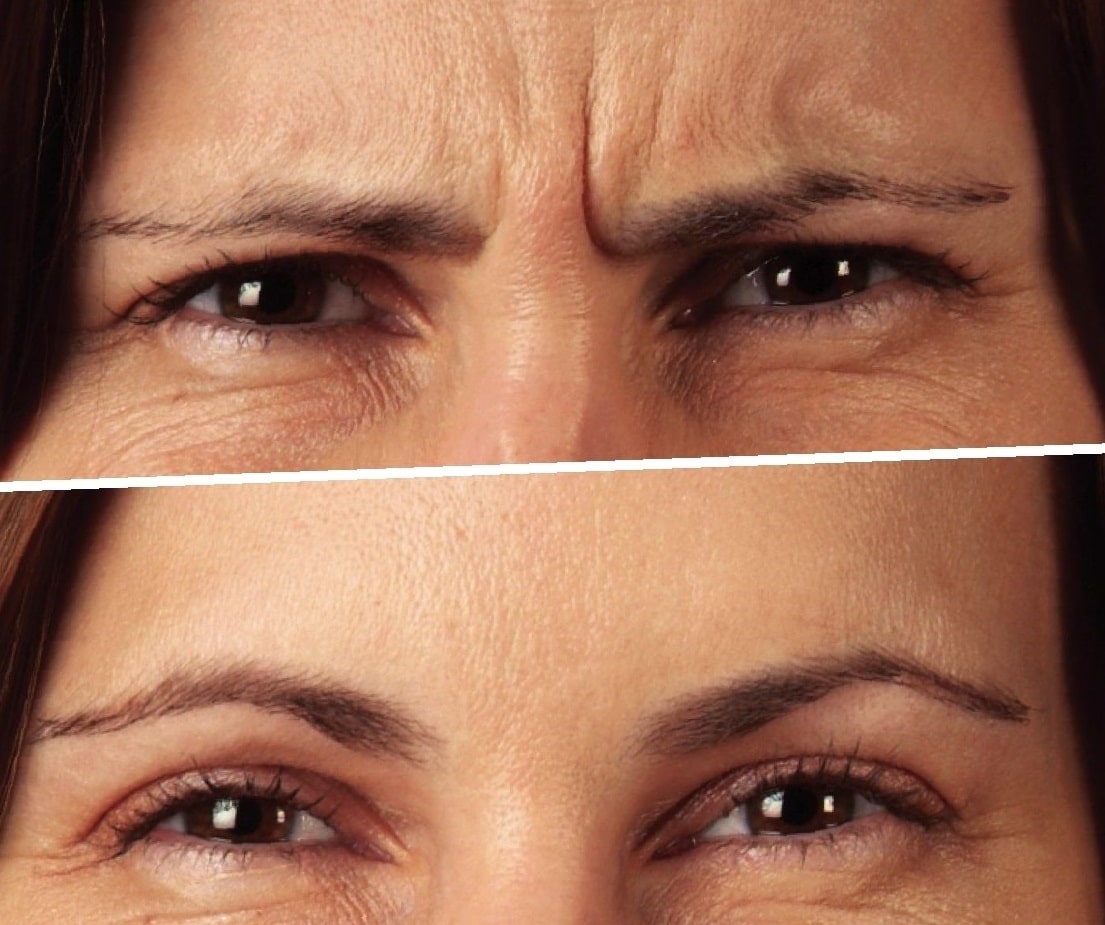
In summary, undergoing the Botox procedure for forehead lines requires a consultation to assess your individualized treatment plan. The actual procedure itself is relatively quick and involves injecting Botox into targeted forehead muscles. Although the process is generally well-tolerated, it is normal to experience slight discomfort during the injections. Results will gradually become noticeable within a few days to a week post-treatment. By following proper post-treatment care and scheduling regular maintenance appointments, you can enjoy smoother and more youthful-looking skin.
Recovery Period: After Botox Injection
The recovery period after a Botox injection is a crucial time for your skin to heal and for the effects of the treatment to fully take place. It is important to understand what to expect during this phase and how to properly care for your skin to ensure optimal results.
During the first few hours after the injection, you may experience some redness, swelling, and mild discomfort at the injection site. These are normal reactions and should subside within a short period of time. Applying a cold compress to the treated area can help reduce swelling and soothe any discomfort.
It is essential to avoid touching or rubbing the treated area for at least 24 hours after the injection. This can prevent the spread of the Botox toxin to unintended muscles and help the product settle into the targeted muscles. Additionally, avoiding strenuous exercise and excessive heat, such as saunas or hot baths, during the first 24 hours can minimize the risk of complications.
- Post-Treatment Care:
After the recovery period following a Botox injection, it is crucial to follow post-treatment care instructions to maximize and maintain the results. Firstly, it is recommended to avoid lying down or bending over for at least four hours following the treatment, as this can cause the Botox to migrate and affect unintended areas. Additionally, it is important to avoid excessive sun exposure and use a broad-spectrum sunscreen to protect the skin.
- Common Side Effects and Risks:
| Side Effects | Risks |
|---|---|
| Temporary bruising or swelling at the injection site | Allergic reactions |
| Headache or flu-like symptoms | Complications due to the injection technique |
| Temporary drooping of eyelids | Spread of the toxin to unintended muscles |
While Botox injections are generally safe, it is essential to be aware of potential side effects and risks. Temporary bruising or swelling at the injection site is common and should resolve within a few days. In rare cases, individuals may experience allergic reactions, headaches, or flu-like symptoms. To minimize the risk of complications, it is crucial to choose a qualified and experienced medical professional to perform the injection.
In conclusion, the recovery period after a Botox injection is a vital part of the treatment process. Proper post-treatment care, avoidance of certain activities, and understanding potential side effects and risks can help ensure successful and safe results. By following these guidelines, you can optimize your Botox treatment and enjoy a smoother, more youthful-looking forehead.

Results: When Will I See A Difference?
One of the most common questions that people have when considering Botox treatment for forehead lines is when they will start to see results. While every individual may experience slightly different timelines, there are some general guidelines to keep in mind.
Firstly, it’s important to understand that Botox does not provide immediate results. Unlike other cosmetic procedures, the effects of Botox take some time to become noticeable. Most patients will start to see a difference within 3 to 7 days after their injection.
However, it’s crucial to note that the full results of Botox may not be apparent until about 2 weeks after the treatment. During this time, the muscles in the treated area gradually relax, and the appearance of forehead lines and wrinkles diminishes.
Maintaining Results: Post-Treatment Care
Getting Botox treatment for forehead lines is a popular choice for many people looking to achieve a smoother and more youthful appearance. While the procedure itself can yield impressive results, it is important to follow proper post-treatment care to maintain these results. Taking care of your skin and making certain lifestyle adjustments can help maximize the effects of your Botox treatment and ensure long-lasting results.
One key aspect of post-treatment care is protecting your skin from harmful UV rays. The sun can accelerate the breakdown of Botox, leading to a shorter duration of its effects. It is crucial to wear sunscreen with a high SPF on a daily basis, even if you are not spending much time outdoors. Additionally, wearing a wide-brimmed hat or using a sun umbrella can provide extra protection when you are exposed to direct sunlight.
Another important factor in maintaining Botox results is to avoid excessive facial movements. While Botox temporarily paralyzes the muscles responsible for causing forehead lines, continuously contracting these muscles can diminish the effects of the treatment. Try to be aware of any habits or facial expressions that may involve excessive movement of the forehead muscles, such as furrowing your brows or squinting. Practice relaxation techniques, such as deep breathing or meditation, to reduce muscle tension in your face.
In addition, establishing a good skincare routine can significantly contribute to maintaining the results of your Botox treatment. Use gentle cleansers and moisturizers suitable for your skin type, and incorporate products with ingredients like hyaluronic acid or peptides that promote skin hydration and elasticity. Avoid abrasive exfoliants or harsh products that can potentially irritate the skin and compromise the longevity of your Botox effects.
| Do: | Don’t: |
|---|---|
|
|
|
|
|
|
|
|
Lastly, maintaining a healthy lifestyle can have a significant impact on the longevity of your Botox results. Eating a balanced diet rich in fruits, vegetables, and nutrients can promote overall skin health. Regular exercise helps improve blood circulation, which can enhance the delivery of nutrients and oxygen to your skin. On the other hand, smoking and excessive alcohol consumption can accelerate skin aging and decrease the effectiveness of Botox.
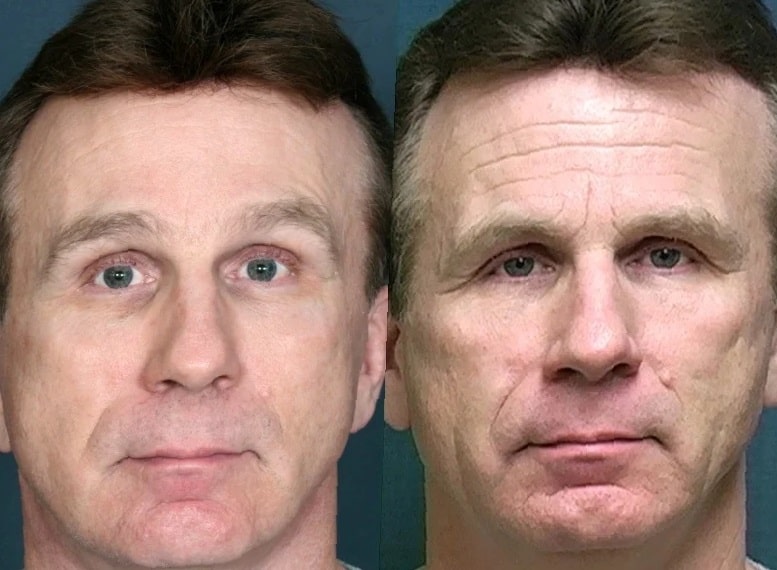
By following these post-treatment care guidelines, you can help maximize the longevity of your Botox results. Remember to consult with your healthcare professional for personalized advice and recommendations tailored to your specific needs. With proper care, your Botox treatment can continue to provide you with a smooth and youthful forehead for an extended period.
Common Side Effects And Risks
The use of Botox for smoothing forehead lines and wrinkles is a popular cosmetic treatment, but like any medical procedure, it does come with some potential side effects and risks. It is important for anyone considering Botox injections to fully understand these risks before making a decision. By being informed, individuals can make an educated choice and take the necessary precautions to minimize any potential adverse effects.
One of the most common side effects of Botox injections is temporary bruising or swelling at the injection site. This occurs due to the needle puncturing the skin and can last for a few days. Although it is a normal response, individuals who are prone to bruising should inform their healthcare provider prior to the procedure.
In some cases, patients may experience headaches after receiving Botox injections. These headaches are usually mild and go away on their own within a few hours to a couple of days. However, if the headaches persist or become severe, it is recommended to consult with the healthcare provider.
- Another possible side effect is drooping or asymmetry of the eyebrows or eyelids. This occurs when the Botox spreads to adjacent muscles, causing them to weaken temporarily. While this is rare, individuals with a history of drooping eyebrows or eyelids may have an increased risk and should discuss this concern with their healthcare provider before proceeding with the treatment.
| Severe side effects, although rare, can occur as a result of Botox injections. These include: |
|---|
| Allergic reactions: Some individuals may be allergic to Botox, which can result in symptoms such as itching, rash, dizziness, or difficulty breathing. If any signs of an allergic reaction occur, immediate medical attention should be sought. |
| Difficulty swallowing or breathing: In rare cases, the toxin can spread beyond the targeted muscles and affect muscles used for swallowing or breathing. This can result in difficulty swallowing or breathing, which should be immediately reported to a healthcare professional. |
| Flu-like symptoms: Some individuals may experience flu-like symptoms, such as fatigue, fever, or chills, after receiving Botox injections. These symptoms typically resolve on their own within a few days. |
As with any medical procedure, it is essential to choose a qualified and experienced healthcare provider when considering Botox injections. They can assess individual suitability, discuss potential risks and side effects, and provide appropriate aftercare instructions to ensure the best possible outcome.
While the majority of individuals tolerate Botox injections well and experience minimal side effects, it is crucial to be aware of the potential risks involved. By understanding these risks and discussing them with a healthcare professional, individuals can make an informed decision about whether Botox is the right treatment option for them.
Alternatives To Botox For Forehead Lines
When it comes to reducing forehead lines and wrinkles, Botox is often the go-to solution for many individuals. However, not everyone is comfortable with the idea of injecting toxins into their skin, or they may simply prefer to explore alternative options. Fortunately, there are several alternatives to Botox that can help diminish forehead lines and wrinkles. In this blog post, we will discuss some of these alternatives, including their benefits and drawbacks.
1. Retinol Creams: Retinol creams are a popular choice for those seeking a non-invasive approach to reducing forehead lines. These creams contain retinoids, which are derived from vitamin A and work by stimulating collagen production in the skin. Regular use of retinol creams can help improve the appearance of fine lines and wrinkles over time. However, it is important to note that retinol can cause skin irritation and sensitivity, so it is advisable to start with a low concentration and gradually increase as tolerated.
2. Microdermabrasion: Microdermabrasion is a non-surgical procedure that exfoliates the top layer of the skin, helping to reduce the appearance of forehead lines and wrinkles. During the treatment, a handheld device blasts tiny crystals onto the skin and then vacuums them away, leaving the skin smoother and more youthful-looking. While microdermabrasion can provide noticeable results, multiple sessions may be required for optimal outcomes.
3. Dermal Fillers: Dermal fillers are injectable substances that can add volume to the skin, thereby reducing the appearance of forehead lines and wrinkles. Hyaluronic acid fillers, such as Juvederm and Restylane, are commonly used for this purpose. These fillers work by plumping up the skin and filling in the deeper creases and lines. While the effects are temporary, lasting typically six to twelve months, they can provide a natural-looking result.
| Alternative | Benefits | Drawbacks |
|---|---|---|
| Retinol Creams | Stimulates collagen production | Possible skin irritation and sensitivity |
| Microdermabrasion | Exfoliates and smooths the skin | Multiple sessions may be required |
| Dermal Fillers | Instant results, natural-looking | Effects are temporary |
While Botox remains a popular and effective treatment for forehead lines and wrinkles, these alternatives offer individuals the opportunity to explore different options that align with their preferences and comfort levels. It is essential to consult with a qualified healthcare professional or dermatologist to determine which alternative treatment may be most suitable for your specific needs and expectations. Remember, each person’s skin is unique, and what works for one individual may not necessarily work for another.
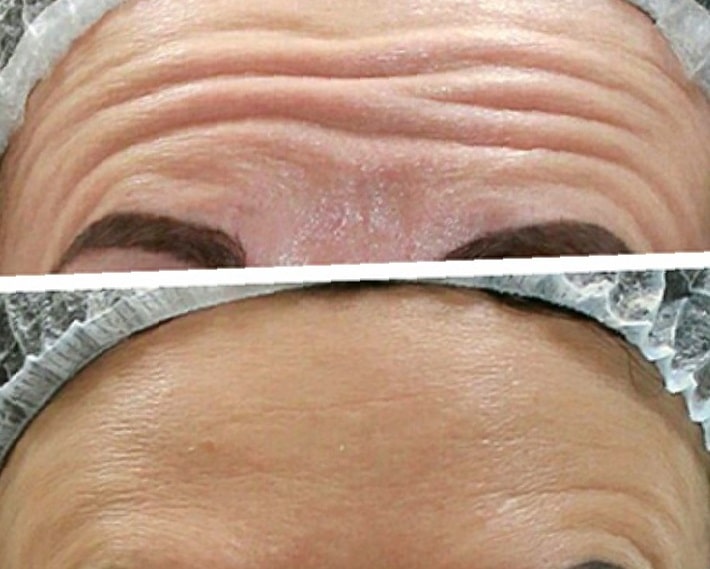
Frequently Asked Questions
Q1: How do forehead lines and wrinkles form?
Forehead lines and wrinkles form due to the natural aging process and decreased collagen production, as well as repeated facial expressions and sun damage.
Q2: How does Botox work to smooth forehead lines?
Botox works by temporarily paralyzing the muscles responsible for creating forehead lines and wrinkles, resulting in a smoother and more youthful appearance.
Q3: What happens during a consultation to assess the forehead?
During a consultation, the healthcare provider will examine the forehead area and discuss the patient’s goals and expectations, as well as assess their suitability for Botox treatment.
Q4: How can I prepare for Botox treatment on my forehead?
Prior to Botox treatment, it is important to avoid blood-thinning medications, discuss any medical conditions or allergies with the provider, and refrain from alcohol consumption. The provider will provide specific instructions.
Q5: What can I expect during the Botox procedure for my forehead?
During the Botox procedure, the healthcare provider will administer several injections of Botox into the targeted forehead muscles. The procedure is relatively quick and involves minimal discomfort.
Q6: What is the recovery period like after Botox injection on the forehead?
The recovery period after Botox injection on the forehead is usually short. Patients may experience mild swelling, redness, or bruising at the injection sites, which typically resolve within a few days.
Q7: When will I start seeing the results of Botox treatment for forehead lines?
Results from Botox treatment for forehead lines are typically noticeable within a few days to a week. However, it may take up to two weeks for the full effects to be visible. Results can last for several months.

Comments are closed.